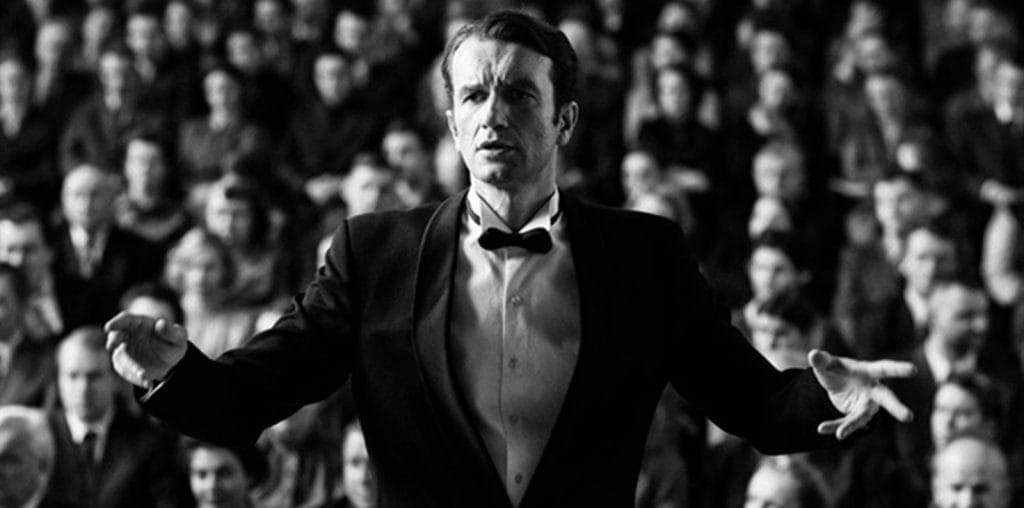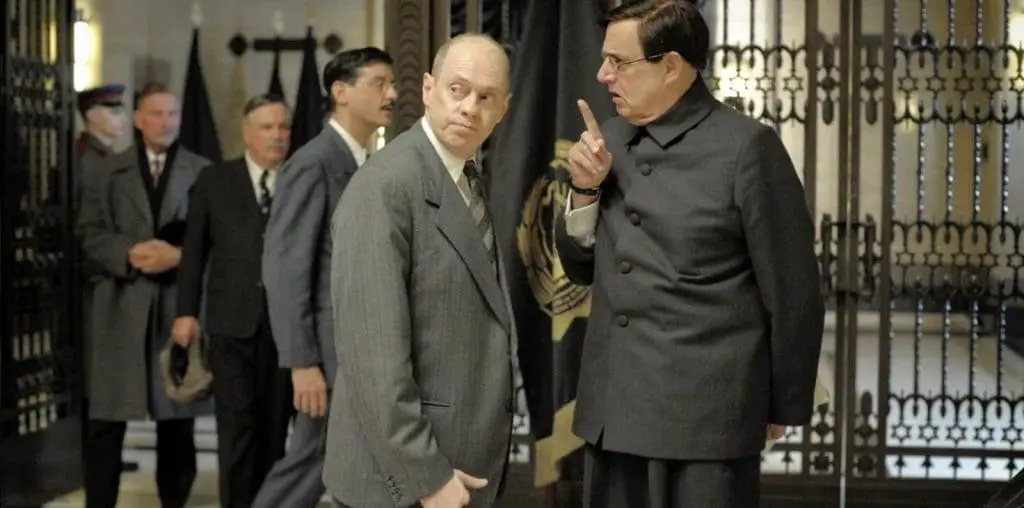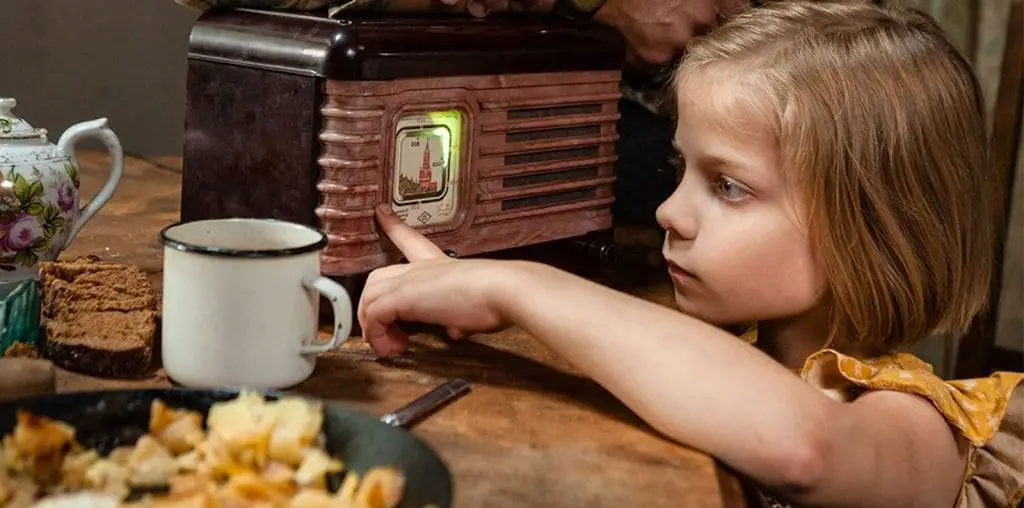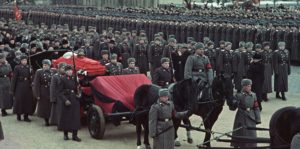
It is important going into State Funeral for the viewer to have some expectation of what they are about to see. The bulk of the footage, covering both urban and rural settings along the multi-ethnic Soviet state, is made up of grieving, somber crowds. We see a repetitive series of mourning processions and repetitious handshakes from delegates arriving from the four corners of the European Communist Bloc and Asian Communist nations. Scenes of gray Communist officials and mournful processions of citizens passing in front of Stalin’s open casket may seem monotonous, but the movie is far from it.
State Funeral, if anything, is incredibly thought-provoking. Loznitsa’s genius lies in the fact that he presents the footage without commentary, without a single Soviet citizen, save for the few party officials who gave a speech, speaking to the camera. The bulk of the dialogue comes from loudspeakers. The official party voice emanating from the loudspeakers is that of the silent proletariat masses. If life for most people in Stalin’s Soviet Union was one of hierarchical ceremony and state propaganda day after day, then the director has given us a total immersion into that reality. As one watches the displays of grief from both average citizens and Communist officials, the mind wonders: How much of the displayed grief is real and how much of it is performative? How many citizens were truly sad over the abandonment they felt now that their “God” had died, and how many were performing so as to fit in with the society around them?
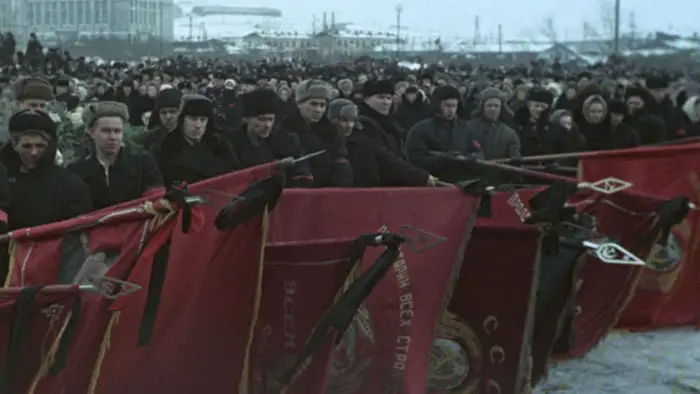
“…incredibly thought-provoking.”
The official eulogies praised Stalin as a teacher, father, guide, and protector. One cannot but notice the blatant authoritarian and patriarchal ideology inherent in the Stalin era. The film shows a nation asking, “now what?” a few days after the death of their leader. Stalin’s regime erased over 27 million Soviet citizens by either murder, execution, torture, imprisonment, or Gulag labor camps. In addition, an estimated 15 million starved to death. A few months after Stalin’s death, Nikita Khrushchev assumed power. Khrushchev led The Soviet Union toward a gradual De-Stalinization and a national reckoning with his crimes — for which some criticized Khrushchev. Loznitsa has presented us with a striking juxtaposition.
We see plenty of sobbing faces throughout State Funeral. What we do not see, but we know all too well exists, are the wincing faces of the tortured and murdered. We in the United States had our four-year flirtation with authoritarianism at the executive level. We can only hope that a substantive reckoning from both sides of the political spectrum will soon be part of our national conversation. Loznitsa’s documentary shows that it is possible.
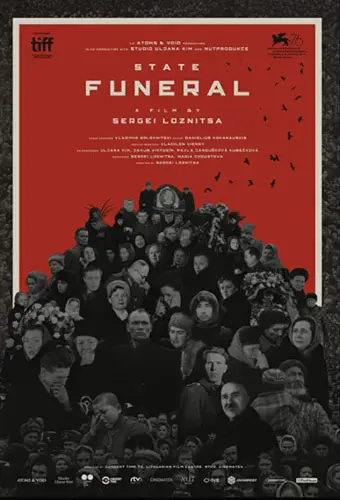
"…what we do not see, but we know all too well exists, are the wincing faces of the tortured and murdered."
